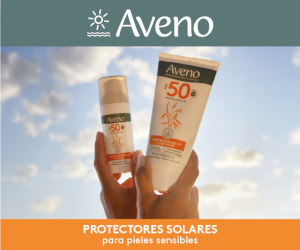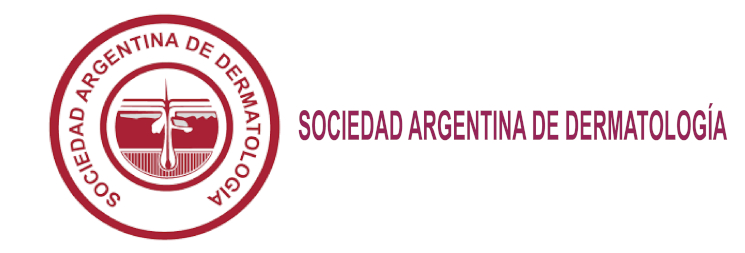Historia de la dermatoscopia. Un viaje a través del tiempo
DOI:
https://doi.org/10.47196/da.v30i2.2581Palabras clave:
dermatoscopia, dermatoscopio, historia, diagnóstico precozResumen
La historia de la dermatoscopia representa un fascinante viaje desde sus primeros pasos hasta su posición actual como una herramienta fundamental en la práctica médica. A lo largo de los años, la dermatoscopia ha experimentado una evolución continua, desde las primeras observaciones con equipos elementales, pasando por el avenimiento del dermatoscopio de mano hasta las sofisticadas tecnologías digitales y de análisis asistido por computadora de hoy en día. Este artículo aborda los orígenes, los hitos clave y las contribuciones significativas que han marcado el curso de la historia de la dermatoscopia, destacando su importancia en el diagnóstico precoz y preciso de una amplia gama de enfermedades cutáneas.
Citas
I. Chabbert P. Pierre Borel (1620 ?-1671). In: Revue d'histoire des sciences et de leurs applications. Tome 21, N°4, 1968;303-343.
II. Buch J, Criton S. Dermoscopy saga: a tale of 5 centuries. Indian J Dermatol. 2021;66:174-178.
III. Hueter C. Die Cheilangioskopie, eine neuen Untersuchungsmethode zu physiologischen und pathologischen Zwe- cken. Centralb Med Wissensch. 1879;13:225-227.
IV. Unna P. Die Diaskopie der Hautkrankhiten. Berl Klin Wochenschr. 1893;42:1016-1021.
V. Unna P. Uber das pigment des pigment der menschlichen haut. Monatsh Prakt Dermatol. 1885;6:277-294.
VI. Saphier J. Die Dermatoskopie, I. Mitteilung. Arch Dermatol Syph. 1921;128:1-19.
VII. Saphier J. Die Dermatoskopie, III. Mitteilung. Arch Dermatol Syph. 1921;134: 314-322.
VIII. Saphier J. Die Dermatoskopie, IV. Mitteilung. Arch Dermatol Syph. 1921;136:149-158.
IX. Saphier J. Die Dermatoskopie II. Mitteilung. Arch Dermatol Syph. 1921;132:69-86.
X. Michael JC. Dermatoscopy. Arch Dermatol Syph. 1922;6:167-178.
XI. Goldman L. Some investigative studies of pigmented nevi with cutaneous nevi with cutaneous microscopy. J Invest Dermatol. 1951;16:407-426.
XII. Goldman L. A simple portable skin microscope for surface microscopy. Arch Dermatol. 1958;78:246-247.
XIII. Mackie RM. An aid to the preoperative assessment of pigmented lesions of the skin. Br J Dermatol. 1971;85:232-238.
XIV. Kreusch J, Rassner G. Das auflichtmikroskopie bild lentiginoser junktionsnavi. Hauzart. 1990;41:274-276.
XV. Braun-Falco O, Stolz W, Bilek P, Merkle T, et ál. Das Dermatoskop. Eine Veeinfachung der Auflichtmi-kroskopie von pigmentierten Hautveranderungen. Hautarzt. 1990;41:131-136.
XVI. Pehamberger H, Steiner A, Wolff K. In vivo epiluminis- cence microscopy of pigmented skin lesions. I. Pattern analysis of skin lesions. J Am Acad Dermatol. 1987;17:571-583.
XVII. Soyer HP, Smolle J, Hödl S, Pachernegg H, et ál. Surface microscopy: a new approach to the diagnosis of cutaneous pigmented tumors. Am J Dermatopathol. 1989;11:1-10
XVIII. Stolz W, Riemann A, Cognetta AB. ABCD rule of dermatoscopy: a new practical method for early recognition of malignant melanoma. Eur J Dermatol. 1994;4:521-527.
XIX. Menzies S, Ingvar C, Mc Carthy W. A sensitivity and specificity analysis of the surface microscopy features of invasive melanoma. Melanoma Res. 1996;6:55-62.
XX. Argenziano G, Fabbrocini G, Carli P, De Giorgi V, et ál. Epiluminescence microscopy for the diagnosis of doubtful melanocytic skin lesions. Comparison of the ABCD rule of dermatoscopy and a new 7-point checklist based on pattern analysis. Arch Dermatol. 1998; 134:1563-1570.
XXI. Kittler H, Rosendahl C, Cameron A, Tschandl P. Dermatoscopy: pattern analysis of pigmented and non pigmented lesions. Facultas. wuv Universitäts, 2016. ISBN 370891385X, 9783708913858.
XXII. Kittler H, Pehamberger H, Wolff K, Binder M. Diagnostic accuracy of dermoscopy. Lancet Oncol. 2002;3:159-165.
XXIII. Vestergaard ME, Macaskill P, Holt PE, Menzies SW. Dermoscopy compared with naked eye examination for the diagnosis of primary melanoma: a meta-analysis of studies performed in a clinical setting. Br J Dermatol. 2008;159:669-676.
XXIV. Pizzichetta MA, Talamini R, Piccolo D, Argenziano G, et ál. The ABCD rule of dermatoscopy does not apply to small melanocytic skin lesions. Arch Dermatol. 2001;137:1376-1378.
XXV. Salerni G, Terán T, Puig S, Malvehy J, et ál. Meta-analysis of digital dermoscopy follow-up of melanocytic skin lesions: a study on behalf of the International Dermoscopy Society. J Eur Acad Dermatol Venereol. 2013;27:805-814.
XXVI. Hekler A, Utikal JS, Enk AH, Hauschild A, et ál. Superior skin cancer classification by the combination of human and artificial intelligence. Eur J Cancer. 2019;120:114-121.
XXVII. Sgouros D, Apalla Z, Ionnides D, Katoulis A, et ál. Dermoscopy of common inflammatory disorders. Dermatol Clin. 2018;36:359-368.
XXVIII. Errichetti E, Stinco G. Dermoscopy in general dermatology: a practical overview. Dermatol Ther. 2016;6:471-507.
XXIX. Rudnicka L, Olszewska M, Majsterek M, Czuwara J. Present and future of dermoscopy. Exp Rev Dermatol. 2006;1:769-772.
Descargas
Publicado
Número
Sección
Licencia
Derechos de autor 2024 a nombre de los autores. Derechos de reproducción: Sociedad Argentina de Dermatología

Esta obra está bajo una licencia internacional Creative Commons Atribución-NoComercial-SinDerivadas 4.0.
El/los autor/es tranfieren todos los derechos de autor del manuscrito arriba mencionado a Dermatología Argentina en el caso de que el trabajo sea publicado. El/los autor/es declaran que el artículo es original, que no infringe ningún derecho de propiedad intelectual u otros derechos de terceros, que no se encuentra bajo consideración de otra revista y que no ha sido previamente publicado.
Le solicitamos haga click aquí para imprimir, firmar y enviar por correo postal la transferencia de los derechos de autor













